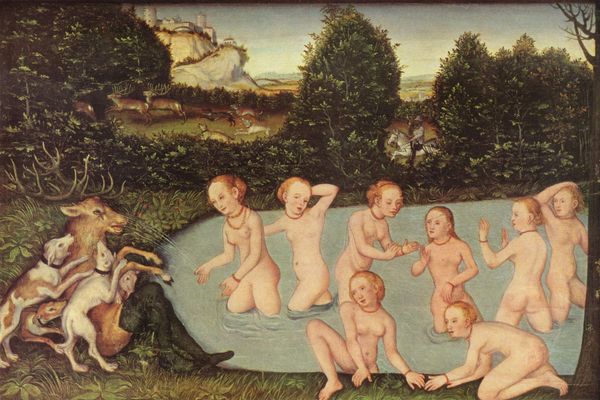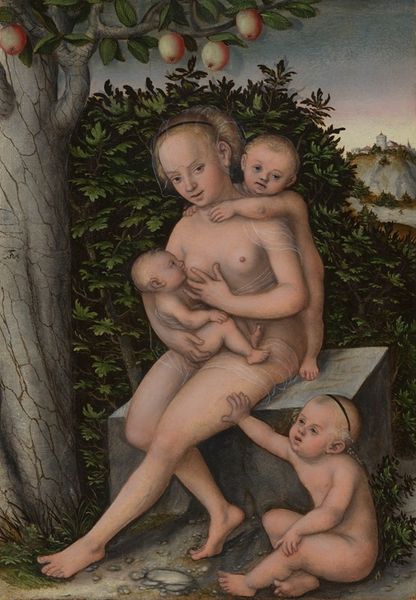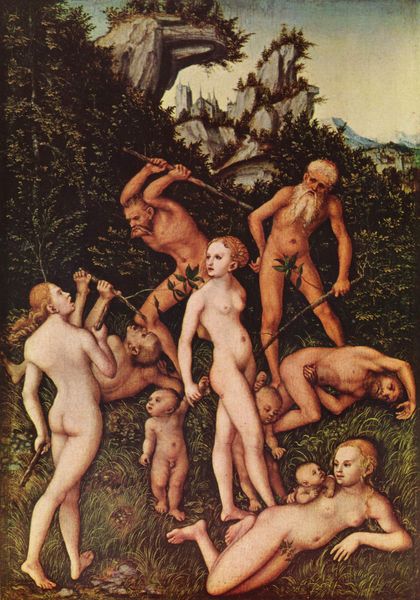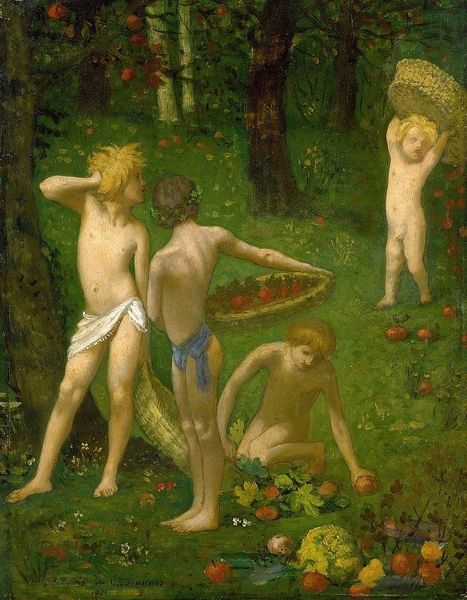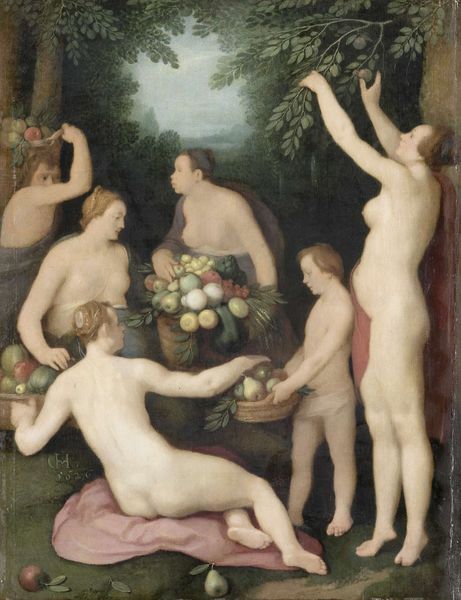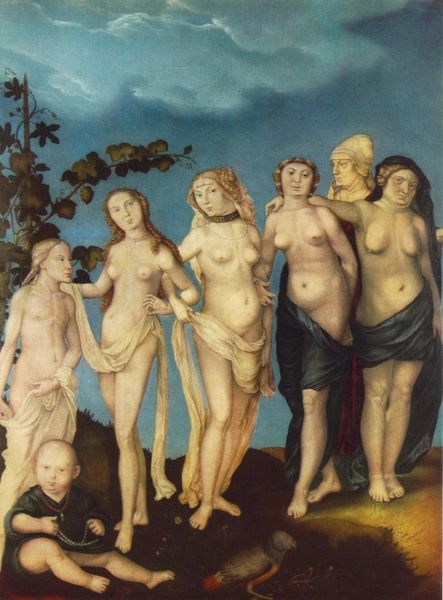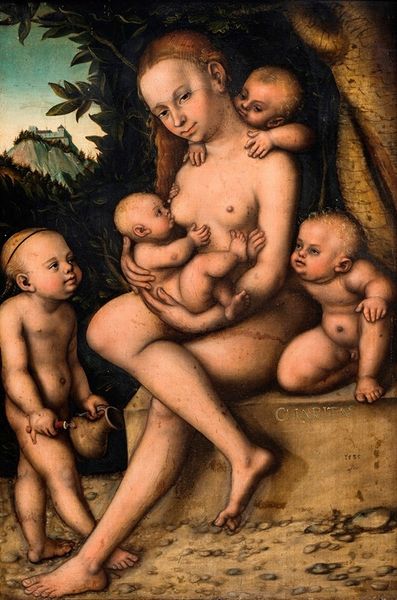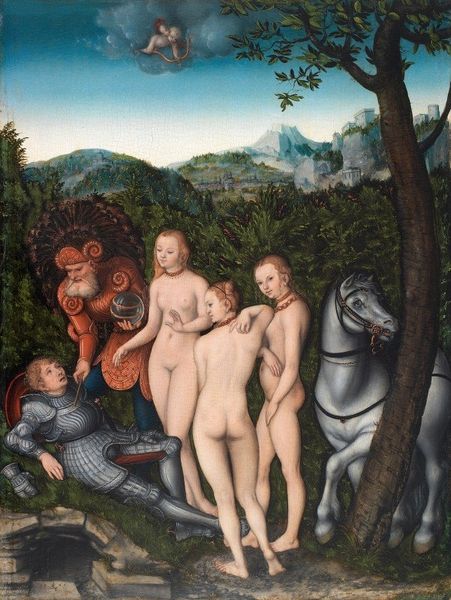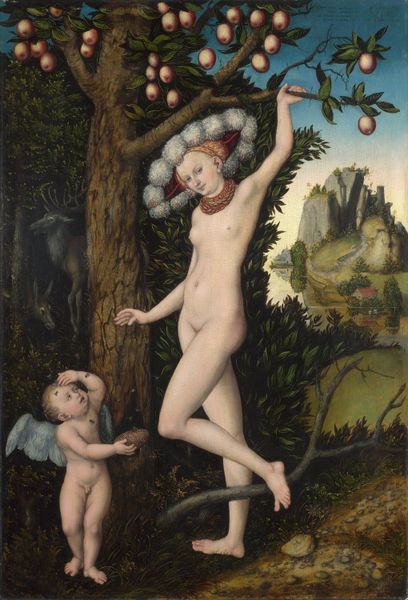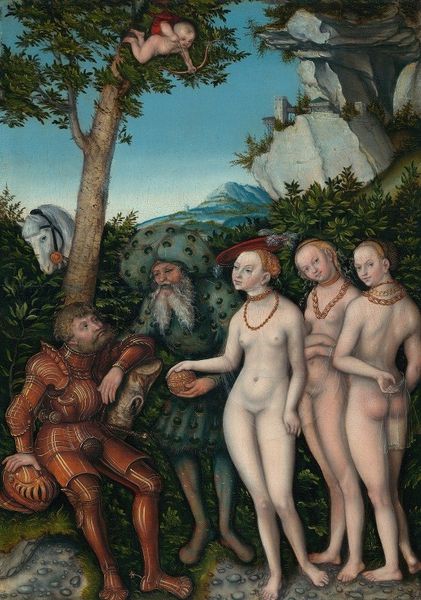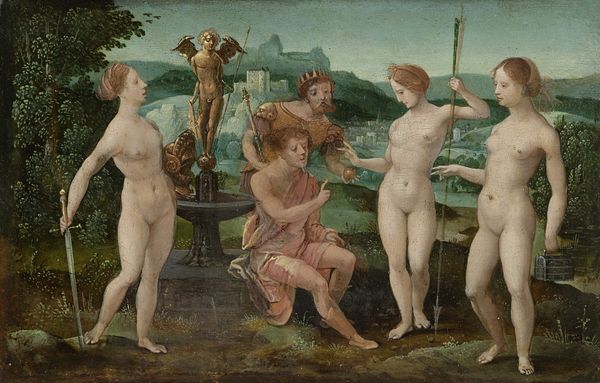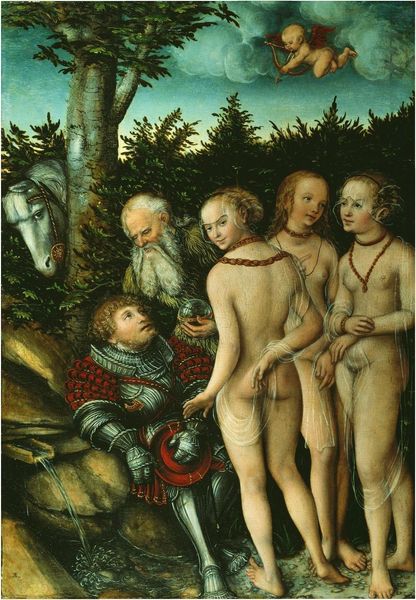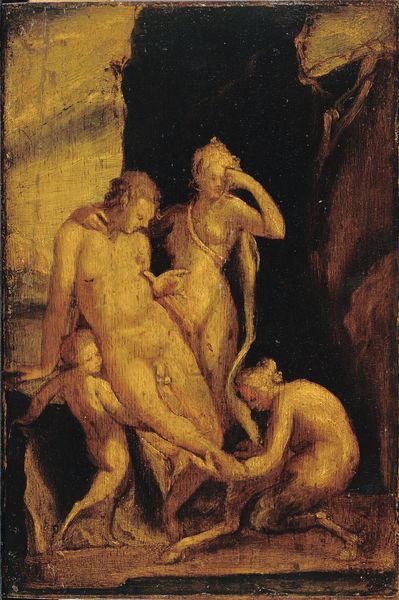
painting, oil-paint
#
allegory
#
painting
#
oil-paint
#
landscape
#
figuration
#
oil painting
#
mythology
#
symbolism
#
genre-painting
#
nude
Copyright: Public Domain: Artvee
Editor: We are looking at "Dancing Putta with a Garland of Roses", an oil painting of unknown date by Hans Thoma. It's got this idyllic, almost dreamlike quality to it with the children dancing in a circle. How do you interpret this work, especially given the context it was created in? Curator: This piece resonates with me because it encapsulates a yearning for a simpler, more harmonious existence, a sentiment prevalent in late 19th-century Europe. Thoma, known for his symbolism, situates these putti within a landscape brimming with cultural significance. Think about the rise of industrialization, the growing anxieties about modernity. Could this be a commentary on the loss of innocence? Editor: That’s an interesting take. I hadn't considered the industrial context so directly. The putti themselves – are they just decorative or do they carry a deeper symbolic weight? Curator: Exactly! Putti, historically, represent divine love and innocence, derived from classical antiquity and later Christian art. But Thoma reclaims and reinvents them. The garland of roses, the dance, even the flute player evoke a pre-industrial, almost pagan celebration of life. Does this resonate with contemporary debates about returning to nature or simpler ways of life, perhaps even a feminist perspective challenging patriarchal structures? Editor: So it's less about traditional religious symbolism and more about a broader, maybe even secular, longing for a different way of being? Curator: Precisely. The nakedness of the figures too--it speaks to vulnerability, innocence but also a challenge to Victorian prudery and expectations. How can we reconcile idealized forms with social criticism? It really prompts us to confront questions about beauty, nature, and societal constraints. Editor: This has really changed how I view this painting; it's much more complex than I initially thought. Curator: I agree, by interrogating visual culture and cultural references we unveil how art becomes a site for negotiating individual and collective experiences, and advocating social transformation.
Comments
No comments
Be the first to comment and join the conversation on the ultimate creative platform.
